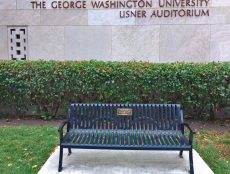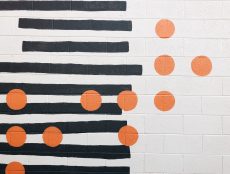
Articles
Editor’s Picks
Higher Education
The Ethics Guiding Student Data Collection and Behavioral Modeling Are Eroding
By Henry Kronk
September 29, 2019
As we progress further into the digital age, an industry has rapidly evolved in American education. It implicates students who might still be in middle school or younger and involves data collectors, brokers, analysts, scientists, software developers, and more. Their goal is simple: understand future students, accurately predict their future behavior, and sell those insights to schools, student-facing companies, and almost anyone else who is willing to pay. They do this via student data collection and predictive behavioral modeling.
At the same time, institutions of higher education are investing huge sums in developing their own data collection and predictive modeling capabilities. These efforts are often done to improve the student experience, increase enrollment, boost graduation rates, increase equity, and more. While data brokers often use questionable techniques and operate in an industry that has yet to be fully defined, let alone regulated by U.S. law, universities say they have the best interests of their students in mind. But increasingly, the capabilities, practices, and end goals of both parties have begun to overlap. Administrators have already demonstrated unethical uses of student data and predictive modeling. In more and more institutions, the only thing preventing the unethical collection, use, manipulation, and sale of student data are the humans holding the reins.
Student Data Is for Sale, and So Are Behavioral Modeling Platforms
The National Association for College Admission Counseling’s (NACAC) national conference wrapped up in Louisville, KY this weekend. On their exposition floor, one could find a booth hosted by a company called Capture Higher Ed. Capture was showcasing its latest product: their Behavioral Intelligence Platform. The platform analyzes vast amounts of student data with AI and predictive modeling software to predict, among other things, the likelihood of students to apply and succeed in their university clients’ institution. Universities, in turn, can take this information and market their institution strategically to students.
In a promotional video, Capture claims that marketing budgets at non-profit institutions have risen by 44% since 2011, while overall student enrollment has fallen by 8%.
“The concept of ‘spend more money and get more students’ is outdated, out-of-touch, and clearly, ineffective,” the ad’s narrator says. “… Students have more control than ever over their choice for post-secondary education. Universities must deliver on these ever-increasing expectations, or risk [the] long-term success of their institutions.”
Their message is clear: universities must take full advantage of student data collection and behavioral modeling. It’s predict or perish.
But to predict accurately, Capture needs access to a large amount of student data. While they don’t explicitly state where they collect it from, it isn’t as if student data is in short supply. Some companies collect their own student data via surveys and questionnaires. Others buy it.
The College Board, the non-profit that plays numerous roles in the college application process in the U.S., provides numerous options for buying student data. Interested third parties can purchase it for $0.47 per student name, or sign on to an annual subscription plan that ranges in price from $4,995 to $17,750 per year.
In 2017, The College Board reported revenue of $99.7 million from their ‘College Opportunities and Enrollment’ program.
With Student Data Brokers, Much Is Unknown and Unregulated
The College Board is just the tip of the iceberg, and much is still unknown about student data brokers. A group of researchers from Fordham University investigated the sector in 2018. They found 14 entities that fit the FTC definition of “companies whose primary business is collecting personal information about consumers from a variety of sources and aggregating, analyzing, and sharing that information…” as it relates to students.
These are: Accurate Leads, American Student Marketing, AmeriList, ASL Marketing, Caldwell List Company, Complete Mailing Lists, DataMasters, DMDatabases, Dunhill International List Co., Inc., Exact Data, InfoUSA, LakeB2B, NRCCUA, and scholarships.com.
A letter signed by three U.S. senators requesting information on student data collection practices was also sent to the same list of companies in August.

While these brokers traffic primarily in student data, the Fordham researchers contacted one at random (ExactData) and found it “was perfectly willing to sell a list of “fourteen and fifteen year old girls for family planning services.”
A transcript of a section of the sales call reads as follows:
“… [Sales representative] here—ExactData—just wanting to touch base regarding that marketing list you had requested from us. I know that your target audience was fourteen and fifteen year old girls for family planning services. I can definitely do the list you’re looking for— I just have a couple more questions. If you can give me a call, 312-[XXXXXXX]. Once again: [Sales representative], ExactData, 312-[XXX-XXXX]. Hope to hear back. Bye.”
The Goals of Data Brokers and University Administrators Are Increasingly Aligning
The case of ExactData represents a particularly egregious example. In many cases, universities contract data brokers to boost and more accurately predict enrollment, as described with Capture above. With a focus on enrollment, many colleges find themselves participating in similar practices and producing similar end results as data brokers.
As St. Louis University’s VP of enrollment and retention management Jay Goff told The Atlantic in 2017, “We needed to focus on finding students who would be a good fit. So when we looked at the demographics of the previous class, we wanted to not only look at the students who chose to enroll at the institution, but those who ended up succeeding and were satisfied. We wanted to know if we could replicate those students.”
St. Louis University did not contract with a data broker to do this. Instead, they started purchasing over 250,000 names per year from The College Board and ACT and conducted their own analysis.
Others, still, want to maintain enrollment and increase students’ chances of succeeding and graduating from college. And to do this, they have gone beyond purchasing or collecting student information via survey.
A team of researchers at Dartmouth University, for example, developed the StudentLife mobile app. The program continually senses “the day-to-day and week-by-week impact of workload on stress, sleep, activity, mood, sociability, mental well-being and academic performance” of users, according to published findings from the initiative.
The app continues to be used. On its dedicated site, its developers describe how the next step will be to use to influence student behavior:
“We purposely provided students with no feedback because we didn’t want to use StudentLife as a behavioral change tool. We simply wanted to “record” their time on campus. Providing feedback and intervention is the next step. For example, we might inform students of risky behavior; such as, partying too much, poor levels of sleep for peak academic performance, poor eating habits, too socially isolated, not flourishing, struggling, etc.”
In other words, many colleges are currently racing to get the most detailed, granular picture of their student body as modern technology will allow. One might expect that it’s only a matter of time before colleges begin using this data for their own interests, and not those of students.
Unfortunately, it has already occurred. A 2016 report from the left-leaning think tank New America documents the following case:
Mount Saint Mary’s University, a small, private Catholic college in Emmitsburg, Maryland, made the news in 2016 when its president, Simon Newman, reportedly said about its freshmen, “You just have to drown the bunnies … put a Glock to their heads.” Newman was referring to a plan he had come up with to artificially improve the school’s retention rate. He wanted to achieve this by requiring new students to take a survey, and then use their answers to identify those who were likely to drop out. Those students would then be encouraged to leave before they were included in the retention data the institution reports to the federal government. In an email sent to staff, Newman wrote that he wanted “20-25 people to leave by the 25th of September to boost retention by 4-5 percent,” according to the school’s newspaper, The Mountain Echo.
Student Data Collection Practices Need Oversight
More and more universities, colleges, learning management systems, data brokers, and edtech developers are collecting student data. They might do so to genuinely improve the student experience. They might do it overtly for their own interests. They might do it for a mix of both reasons.
But as related by Capture’s promotional video, overall enrollment post-secondary enrollment is falling in the U.S. Many small- and medium-sized colleges have already closed as a result. By some predictions, it will get worse before it gets better.
So even if administrators launch massive data collection and behavioral modeling initiatives with good intentions, they very well might find overwhelming reasons to change their course in the near term.
This mix of circumstances makes it all the more important for increased regulation of student data collection and the practice of predictive behavioral modeling in higher education.
As the Fordham researchers write, “Currently there is no federal privacy law in the United States that specifically targets the use, retention or resale of student data by private-sector data brokers.”
The group provides a set of recommendations based on their finding. Read their full report here.
Featured Image: hnt6581, Flickr.









No Comments